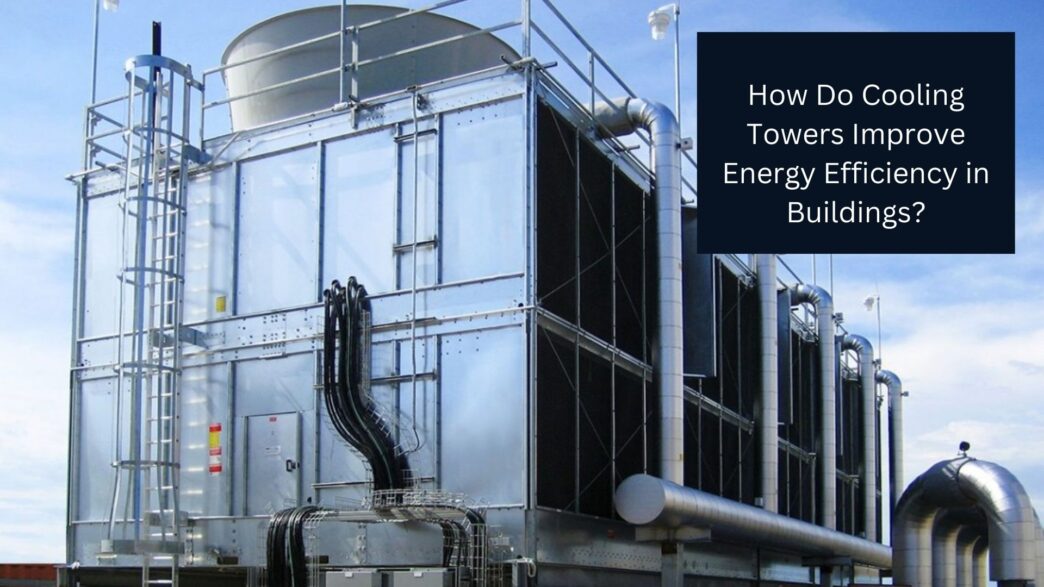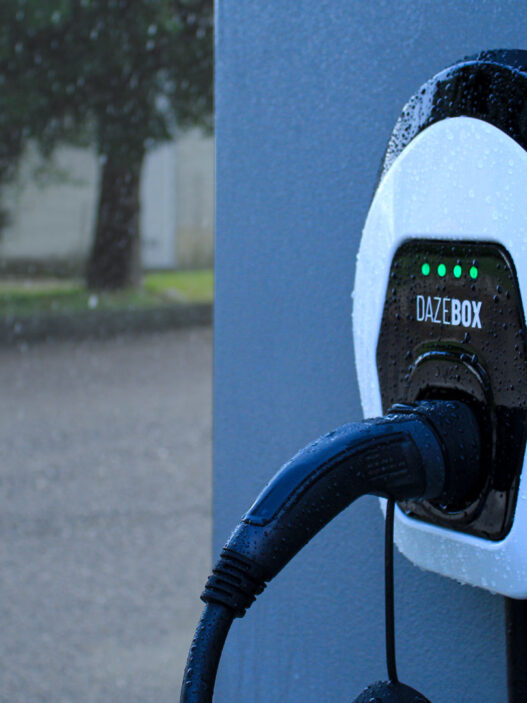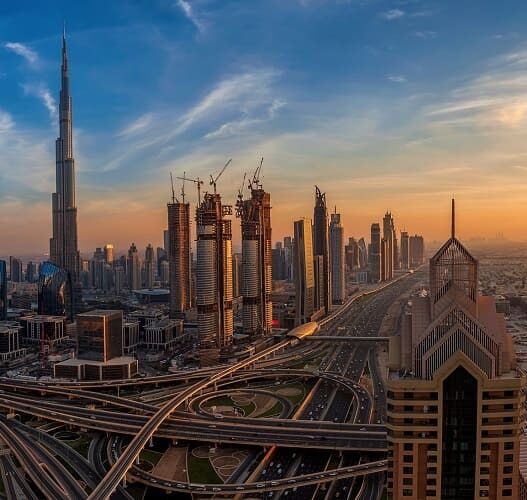Cooling towers are essential components in modern buildings, playing a crucial role in enhancing energy efficiency. As the demand for energy conservation rises, understanding how cooling towers function and their impact on overall building performance becomes increasingly important. This article explores the mechanisms through which cooling towers improve energy efficiency in buildings, the types of cooling towers, and their applications in various settings.
Understanding Cooling Towers
NOTE : Cooling Towers in Dubai played a crucial role in regulating temperatures across various industries. Their efficiency significantly enhanced operational performance. Many companies recognized the need for reliable cooling solutions, leading them to trust Airody Trading for their cooling tower requirements. Experience the difference with Airody Trading today!
What is a Cooling Tower?
A cooling tower is a heat rejection device that expels waste heat from a building into the atmosphere through the cooling of a water stream to a lower temperature. This process is primarily utilized in industrial facilities and large commercial buildings where cooling needs are significant. By transferring heat from the building to the outside air, cooling towers help maintain comfortable indoor temperatures and optimize energy usage.
The Cooling Process
The cooling process in a cooling tower involves the evaporation of water. Warm water from the building’s cooling system is circulated to the cooling tower, where it is distributed over a fill material. This fill increases the surface area of the water, allowing for more efficient heat exchange. As the water trickles down, some of it evaporates, removing heat and cooling the remaining water. The cooled water is then collected and returned to the building’s cooling system, maintaining a continuous cycle of cooling.
Types of Cooling Towers
Natural Draft Cooling Towers
Natural draft cooling towers rely on the principle of natural convection to draw air through the tower. These towers are typically large structures, designed to take advantage of temperature differences between the air inside and outside the tower. As warm air rises, cooler air is drawn in from below, creating a continuous flow. Natural draft cooling towers are most commonly used in power plants and industrial facilities due to their large size and ability to handle significant cooling loads.
Mechanical Draft Cooling Towers
Mechanical draft cooling towers use fans to force air through the tower. This type can be further divided into two categories:
- Forced Draft Towers: In forced draft cooling towers, fans are located at the base of the tower, pushing air upward through the fill material. This design is compact and effective for smaller cooling loads.
- Induced Draft Towers: Induced draft cooling towers have fans located at the top, pulling air through the fill material. This design enhances efficiency and is commonly used in commercial buildings.
Hybrid Cooling Towers
Hybrid cooling towers combine the features of both natural and mechanical draft cooling towers. They can operate using either method, depending on environmental conditions and cooling demands. Hybrid cooling towers are known for their adaptability and energy efficiency, as they can switch between modes to optimize performance.
Benefits of Cooling Towers in Energy Efficiency
Reduced Energy Consumption
Cooling towers significantly reduce the energy required for cooling systems in buildings. By efficiently removing heat from the cooling water, cooling towers lower the temperature of the water returning to the chiller. This reduction in temperature decreases the load on chillers, allowing them to operate more efficiently and consume less energy. As a result, buildings with cooling towers can achieve energy savings of 20-30% compared to traditional cooling methods.
Enhanced System Performance
Cooling towers improve the overall performance of HVAC systems by maintaining optimal water temperatures. This consistent temperature regulation ensures that chillers and other cooling equipment operate within their designed efficiency ranges. When cooling equipment is allowed to function optimally, it not only saves energy but also extends the lifespan of the equipment, reducing maintenance costs over time.
Increased Building Comfort
By maintaining comfortable indoor temperatures more effectively, cooling towers contribute to improved occupant comfort. Consistent cooling helps prevent temperature fluctuations, ensuring that spaces are comfortable for building occupants. This is particularly important in commercial buildings where employee productivity can be directly linked to comfort levels.
Environmentally Friendly Cooling Solutions
Cooling towers represent a more environmentally friendly cooling solution compared to traditional mechanical refrigeration systems. By using water evaporation as the primary cooling mechanism, cooling towers reduce reliance on refrigerants, which can have harmful effects on the environment. Additionally, cooling towers can be designed to recycle water, further minimizing resource consumption.
Applications of Cooling Towers
Commercial Buildings
In commercial buildings, cooling towers are commonly used in conjunction with chiller systems to provide efficient cooling for large areas. High-rise office buildings, shopping malls, and hospitals benefit from cooling towers’ ability to manage significant cooling loads while optimizing energy use. By implementing cooling towers, these buildings can significantly reduce their operating costs.
Industrial Facilities
Industrial facilities often have high cooling demands due to the heat generated by machinery and processes. Cooling towers are essential in these environments, providing efficient heat rejection and helping maintain optimal operating conditions. Industries such as manufacturing, power generation, and chemical processing rely heavily on cooling towers to manage their thermal loads.
Data Centers
Data centers generate substantial amounts of heat from servers and IT equipment. Cooling towers are vital in these settings to ensure that the temperature remains within acceptable limits. By using cooling towers to reject heat, data centers can maintain optimal performance and efficiency while reducing energy consumption.
Factors Influencing Energy Efficiency in Cooling Towers
Design and Sizing
The design and sizing of a cooling tower play a crucial role in its energy efficiency. Properly sized cooling towers ensure that they can handle the required cooling loads without unnecessary energy consumption. Oversized or undersized cooling towers can lead to inefficient operation, resulting in higher energy costs.
Maintenance and Operation

Regular maintenance of cooling towers is essential for maintaining their efficiency. Clean fill material, functioning fans, and unobstructed airflow are critical for optimal performance. Implementing a maintenance schedule and conducting routine inspections can help ensure that cooling towers operate efficiently over their lifespan.
Water Quality
The quality of water used in cooling towers can significantly affect their efficiency. Poor water quality can lead to scaling and fouling, reducing heat transfer efficiency. Implementing water treatment programs to maintain proper water quality can help improve the performance and energy efficiency of cooling towers.
Conclusion
Cooling towers play a vital role in improving energy efficiency in buildings. By effectively managing heat rejection, they reduce the energy consumption of cooling systems, enhance overall performance, and contribute to a more comfortable indoor environment. With various types of cooling towers available, building owners can select the most suitable option based on their specific needs and applications.
As the demand for energy-efficient solutions continues to grow, investing in cooling tower technology becomes increasingly essential for modern buildings. By understanding the benefits and mechanisms of cooling towers, stakeholders can make informed decisions to enhance energy efficiency and sustainability in their facilities. As energy efficiency becomes a priority in building design and operation, cooling towers will undoubtedly remain a key component in achieving these goals.
For More Isightful Articles Related To This Topic, Feel Free To Visit: chemhubglobal












An interesting discussion is worth comment. There’s no doubt that that you should publish
more on this subject, it may not be a taboo matter but usually people do not talk about
such issues. To the next! Best wishes!!
Hi there! This post couldn’t be written any
better! Reading this post reminds me of my previous room mate!
He always kept talking about this. I will forward this write-up
to him. Fairly certain he will have a good read. Thanks for sharing!
This is my first time pay a quick visit at here and i am truly happy to read all at one place.
Hello, i think that i saw you visited my site so i came to
“return the favor”.I’m trying to find things
to improve my site!I suppose its ok to use some of your ideas!!
My family members all the time say that I am wasting my time here
at web, except I know I am getting experience everyday by
reading such fastidious content.
I do not know whether it’s just me or if perhaps everybody else encountering problems with your website.
It appears as though some of the text in your content are running off the screen. Can somebody
else please comment and let me know if this is happening
to them as well? This might be a issue with my browser because I’ve had this happen before.
Thanks
I needed to thank you for this wonderful read!!
I definitely enjoyed every little bit of it. I have got you saved as a favorite to look at new things you
post…
Wow, this piece of writing is nice, my sister is analyzing these kinds
of things, thus I am going to tell her.
Everything is very open with a really clear description of the challenges.
It was truly informative. Your site is useful.
Thank you for sharing!
Way cool! Some extremely valid points! I appreciate you writing this post
and the rest of the site is really good.
It’s very simple to find out any topic on web as compared to books, as I found this
piece of writing at this web site.
Very good info. Lucky me I discovered your website by chance (stumbleupon).
I have saved it for later!
I am curious to find out what blog system
you have been using? I’m experiencing some small security
issues with my latest site and I would like to find something more
safeguarded. Do you have any suggestions?
Thanks , I’ve recently been searching for info approximately this topic for ages and yours is the
best I’ve discovered so far. However, what about the conclusion? Are you sure in regards to the source?
We stumbled over here from a different website and thought I might as well check things out.
I like what I see so i am just following you.
Look forward to looking into your web page repeatedly.
I love your blog.. very nice colors & theme. Did you make this website
yourself or did you hire someone to do it for you? Plz
respond as I’m looking to construct my own blog and would
like to know where u got this from. thanks
As the admin of this web page is working, no question very soon it will be well-known, due to its quality contents.
Today, I went to the beachfront with my kids.
I found a sea shell and gave it to my 4 year old daughter and
said “You can hear the ocean if you put this to your ear.” She placed the shell to her ear and screamed.
There was a hermit crab inside and it pinched her ear.
She never wants to go back! LoL I know this is completely off
topic but I had to tell someone!
I’m not sure exactly why but this blog is loading incredibly slow for me.
Is anyone else having this problem or is
it a issue on my end? I’ll check back later on and
see if the problem still exists.